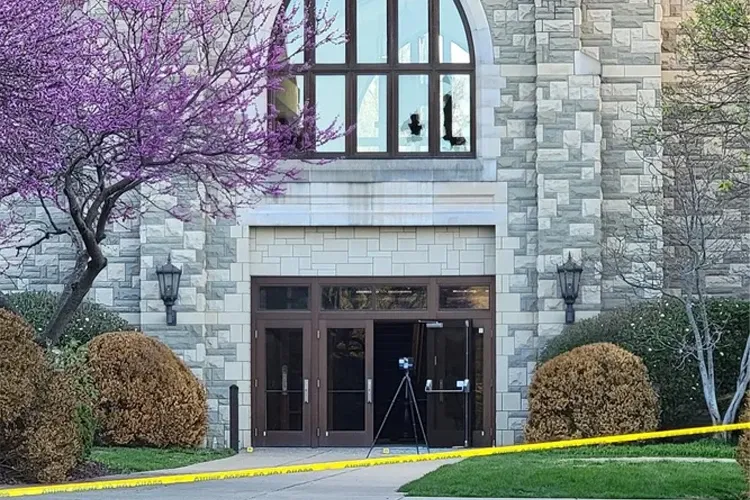At approximately 10 o’clock on Monday, March 27th, Audrey Hale, a female who identifies as transgender, entered the Covenant Presbyterian Church with two rifles and a pistol.
Shortly thereafter, heroic Nashville police officers entered the school and began searching rooms for the active shooter. Hearing gunshots, they made their way up the stairs and encountered the shooter in an atrium. 10 minutes after the initial 911 call, the threat was stopped, but not before 3 children and 3 adults lost their lives.
There’s no way to read this story without your heart sinking in your chest.
Yet, while the families who lost their loved ones continue grieving, the media turns immediately to matters of policy. As President Obama’s chief of staff, Rahm Emanuel, once said of the 2008 financial crisis, “Never let a serious crisis go to waste.”
Many articles have already been written that start with something like “in the wake of the deadly Nashville school shooting, lawmakers have proposed common sense gun control measures.”
Apparently, this is the time for politicians to step into the limelight and emote for more votes: “How can we make sure no one ever uses a gun to kill people ever again?!”
Rather than working to correct the core issues of violence and hatred at the heart of every mass shooting, the Left wants to compound the problem by disarming law-abiding people with a new wave of anti-gun restrictions.
But if we take a moment to pause, to grieve, and then to think, we will soon realize that this is the wrong question. For the time being, people are going to find ways to commit mass murder, regardless of the weapon they choose. While there was a time when this kind of violence was much less common, that is not the time in which we live.
This is not to say the problem can’t be solved. Cultural norms and broadly-accepted moral standards (yes, everyone has them) can and do change over time. This is the reason mass murder has become more common in the last 50 to 75 years. We can change this, but it’s going to take a while, just like it took a while to get here.
Ultimately, the recent uptick in mass killings can’t be reversed quickly or completely. The violent rhetoric of the Left likely contributed to the Nashville shooting and may be linked to several others. And rather than working to correct the core issues of violence and hatred at the heart of every mass shooting, they want to compound the problem by disarming law-abiding people with a new wave of anti-gun restrictions.
Gun control is a failed experiment, and the recent demands for more have moved beyond the absurd. Gun control quite simply does not work. It only provides a better environment for the violent to hurt and kill the innocent.
Case in point:
In October of 2021 in Kongsberg, Norway, Norwegian police officers, who usually go unarmed, confronted a man who had been seen walking around with a bow and arrows. The man shot arrows at the police and eventually escaped. Over the next 35 minutes, the murderer would go on to kill 5 people and wound 3 others, including an off-duty police officer. This attack was efficiently carried out despite Norway’s “assault rifle” ban just two years earlier.
Or consider the mass stabbing of 11 people in September of last year in Saskatchewan, Canada, where the law-abiding use of firearms is strictly controlled and largely prohibited. Or observe the London Bridge attack of 2017, where assailants used a van to kill 8 people and injure 48.
Politicians and activists who truly believe that we can somehow stop violence by restricting law-abiding people’s access to firearms aren’t being honest with themselves.
When someone wants to do violence, access to firearms is irrelevant. As long as they have access to anything that can be used as a weapon (and virtually anything can), people bent on violence will find a way to carry out their plans.
Politicians and activists who truly believe that we can somehow stop violence by restricting law-abiding people’s access to firearms aren’t being honest with themselves.
The question we should be asking is this:
“How can we stop these mass killings faster?”
Yes, we must address mental health issues. Violence and hatred can and should be reduced.
But we must also harden vulnerable targets like schools with better security and the ability to provide an armed response when anyone tragically resorts to the kind of evil we saw in Nashville. In that kind of terrible situation, we must provide a clear and safe path to ending the violence absolutely as quickly as possible.
Todd McGhee, whose company, Protecting the Homeland Innovations, provides anti-terrorism training for the US State Department said, “Those first-responding officers were the model response in how active shooter response should be.”
According to reports, the first shots fired in the recent Nashville shooting happened at 10:11 am. At 10:14 the first 911 call was made. At 10:21 am, police arrived on scene, which is a fantastic response time. At approximately 10:24 am, police engaged the shooter and ended the threat. The responding officers are heroes, without question.
In fact, Todd McGhee, whose company, Protecting the Homeland Innovations, provides anti-terrorism training for the US State Department said, “Those first-responding officers were the model response in how active shooter response should be.”
It took nearly 3 minutes for anyone to call 911, 7 minutes for police to arrive on scene, and 3 more minutes to find the shooter and end the threat. That’s 13 minutes from first shots to the last.
If that’s the model response to an active shooter, it should make us ask the question: is 13 minutes a fast enough response when the lives of children are on the line?
If that’s the model response to an active shooter, it should make us ask the question: is 13 minutes a fast enough response when the lives of children are on the line?
The hard reality is 6 people still died. When seconds mean more deaths, why would we rely solely on a police force that must, by nature, come from somewhere else?
One indisputable fact about mass shootings is that they are, with very few exceptions, ended by a gun. Either the shooter is killed by police or he/she commits suicide, often because the police have arrived.
This is the case for the school shootings in Nashville, Uvalde (despite the irresponsibly slow police response), Columbine, Sandy Hook, Virginia Tech, and all the way back to the University of Texas clock tower shooting in 1966. And it’s often the case with shootings at locations other than schools, as well.
Since most shootings end because a good guy with a gun has arrived, why would we NOT ensure there is a good guy with a gun at every school? Or even multiple good guys with guns? What if the police only had to show up to secure the scene instead of stepping over dead bodies to hunt down a still-active shooter?
To prove my point, consider the story of Joel Myrick:
On October 1, 1997, in Pearl, Mississippi, a gunman entered Pearl High School with a .30-30 rifle. Immediately after the school’s vice-principal, Joel Myrick, heard the gunfire, he ran to his truck, grabbed his Colt .45, loaded it, and headed back inside.
Once the shooter saw Myrick with a gun, he got in his car. He would later tell police that he was driving to the junior high school to continue his rampage. But after Myrick pointed the handgun at the shooter’s windshield, he crashed. Myrick held the shooter at gunpoint until police arrived. Tragically, two students were killed.
Myrick’s actions saved the lives of potential victims at the junior high school. And he is widely recognized as a hero for his actions.
What does Joel Myrick’s story teach us?
The faster a good guy with a gun gets to the scene of a shooting, the faster the shooting stops.
The faster a good guy with a gun gets to the scene of a shooting, the faster the shooting stops.
Had Joel Myrick had that gun on him instead of in his truck, the shooting would have stopped even faster.
At this point, the only logical conclusion is to get good guys with guns to schools faster. And even better, have good guys with guns in the schools themselves.
Whenever anyone brings up the idea of school staff carrying guns, the Left immediately dismisses it, out of hand. In 2018, NEA Vice President Becky Pringle said the idea “sounds more like a prison to me, with the teachers as armed guards and students as prisoners.”
But if the presence of guns makes a school a prison, then what is the White House, or the Capitol building, or a bank? The truth is that our society surrounds the things we treasure most with guns for protection. It’s past time we started protecting our children as vigorously as our money and our politicians.
The truth is that our society surrounds the things we treasure most with guns for protection. It’s past time we started protecting our children as vigorously as our money and our politicians.
What’s more, the opponents of arming school staff often don’t know what they’re talking about when it comes to responsible gun ownership. They point to instances of school resource officers, teachers, or administrators doing things that are either illegal or negligent or both.
I agree that these instances are a problem and opponents see this as a reason to not arm school staff. In reality, it is a reason for more training and more structured programs. Since it is undeniably true that mass shooters are nearly always stopped by the presence of a good guy with a gun, we should take the time to train the very people who are facing the deadly threat with the tools and training they need to protect the children that they are responsible for.
And despite claims by left-wing gun control groups to the contrary, arming school staff is a supremely practical option. There are already large national training organizations providing training at scale for school districts across the country. And with 22 million concealed carry permit holders in America, many school districts have staff that already have some familiarity with concealed carry or already own guns they keep at home. All it would take is for school boards to give them the opportunity, time, and structure to train.
In fact, many states already have schools where staff are armed. According to the New York Times in late 2022, over 1300 school staff in Florida alone go armed to their job and another 402 school districts in Texas allow designated members of school staff to go armed. Many other states allow the practice, as well. Arming school staff isn’t a crazy idea — it’s already happening.
In my experience, most people are more than willing to put themselves in harm’s way for children — even children who aren’t their own — and even more so for their own students.
It has already been proven that a responsible, comprehensive program to arm school staff does NOT add more danger to schools, overall. It gives our precious, vulnerable children a fighting chance.



